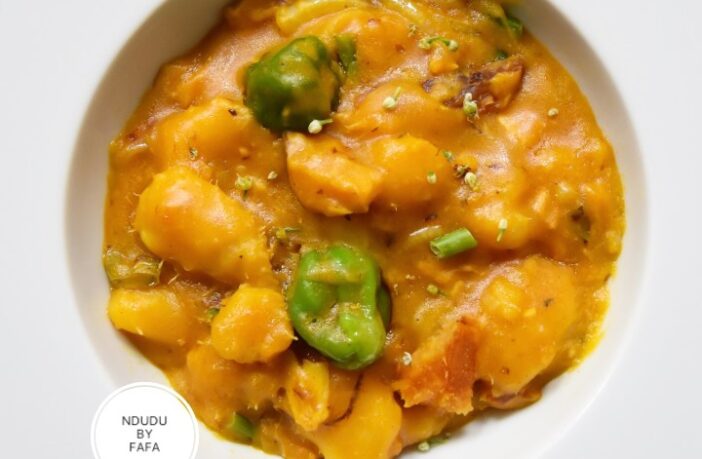Yam porridge, also known as Mpoto Mpoto in the Akan language, is widely regarded as the simplest yet most delicious yam dish.
Before we dive into this delectable dish, let us first learn about the Akan tribe, among whom this dish is popular.
Akan, a group of people who speak Akan languages (of the Kwa branch of the Niger-Congo family) and are said to be from the Guinea Coast. They speak Akyem, Anyi, Asante (Ashanti), Attié, Baule, Brong, Chakosi, Fante (Fanti), and Guang.The majority of Akan live in Ghana, where they arrived in successive waves between the 11th and 18th centuries; others live in the eastern part of Côte d’Ivoire and parts of Togo.
The Ashanti culture refers to the cultural practices, beliefs, and customs that are distinct from Ghanaian culture. Twi, also known as the Akan language, holds the distinction of being the first dialect used in translation of the Bible in Ghana.
Yams are the most important food crop in the Akan economy, but plantains and taro are also important; cocoa and palm oil are important commercial resources.
Composed of matrilineal clans, the members, trace their descent from a common female ancestor; these clans are hierarchically organized and are subdivided into localized matrilineages, which form the basic social and political units of Akan society.
Most Akans live in compact villages that are divided into wards occupied by the matrilineages and subdivided into compounds of extended multigeneration families.
The village is a political unit under a headman, elected from one of the lineages, and a council of elders, each of whom is the elected head of a constituent lineage.
The lineage head is the custodian of the lineage’s stools, which are the symbols of unity between the spirits of the ancestors and the living members of the lineage; every lineage also has its own god or gods. There is a strong feeling of corporate responsibility among lineage members. Matrilineal descent also governs inheritance, succession, and land tenure. Paternal descent is also recognized and determines membership in the ntoro, a group sharing certain taboos, surnames, forms of etiquette, and ritual purification ceremonies.
The Ashanti traditionally have an abundance of food supplies. The foods they grow include plantains, cassava, maize, cocoa, vegetables, cereals, legumes, and yams.
The Ashanti tribe eat different foods to celebrate their culture and bring people together.
Today we will be looking at Mpoto Mpoto, as indicated above. It is a cuisine made from yams. However, other ingredients that make up the food include onions, tomatoes, pepper, fish, and salt.

It is also known as Yam Pottage and Asaro by the Nigerians, which is also made from several ingredients including fish and onion.
Ingredients to use:
• Medium-sized cocoyam or yam
• 1 medium-sized onion
• 2 medium-sized tomatoes
• Dried Herrings or fish
• Pepper
• Palm oil
• Salt to taste
• Water
How To Prepare
• Peel and wash the cocoyam or yam, then cut into small chunks
• Place yam in a pot together with onion and tomatoes and pepper.
• Add water enough to cover the content and boil between 25 and 35 minutes.
• Wash and add dried herrings or fish to the pot.
• Cook till tender and remove tomatoes, pepper and onions and grind.
• Add the ground mixture to the yam on fire.
• Add Palm oil and salt to taste.
• Reduce heat and stir the mixture and allow it to cook intermittently
Be sure to try out this recipe, and give feedback.
https://www.britannica.com/topic/Akan
https://yen.com.gh/171325-ashanti-culture-language-religion-food-rites-clothing-facts.html
source: myghanadaily.com





